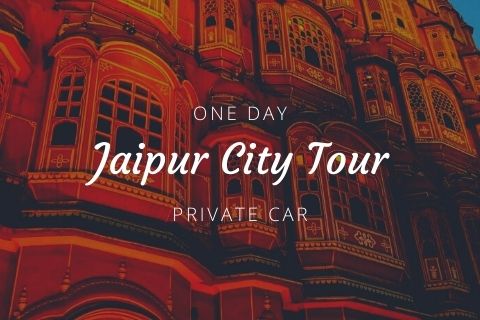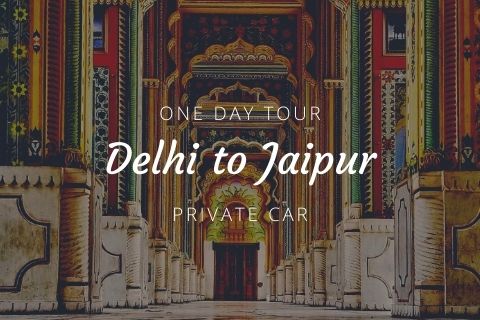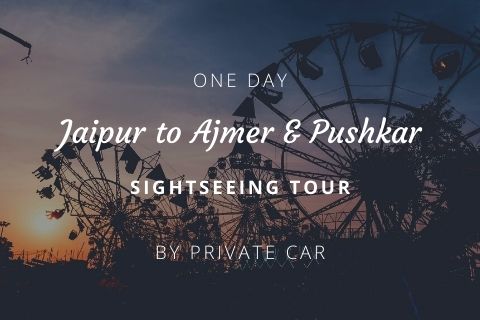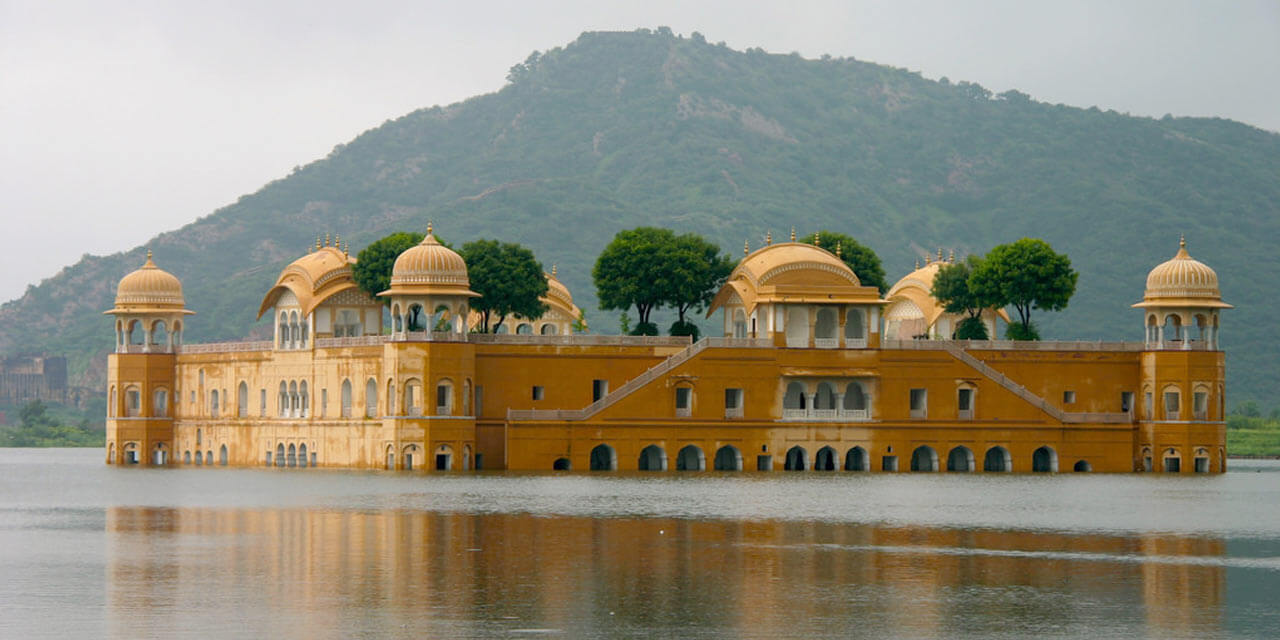Jal Mahal Jaipur Entry Fee
- N/A
Jal Mahal Jaipur Phone
0141 263 0714
Rating:  | 4/5 stars
| 4/5 stars
Based on total 15 reviews
Jal Mahal Jaipur Address: Jal Mahal, Amber Road, Jaipur, Rajasthan, 302002, India
Jal Mahal or the Water Palace is one of the most majestic places to see in Jaipur. The city is dotted with marvelous architectural beauties and Jal Mahal stands at the forefront of these works of art. Standing amidst the center of Man Sagar Lake, the palace, when you first look at it, will give you the illusion of almost floating atop the lake and that is the moment when this sight takes your breath away.
The palace is not too high and has four dome-shaped pillars at four corners with a big one in the center. Jal Mahal was once the shooting lodging for the Maharaja of Jaipur and is now one of the landmarks of Jaipur.
Though the city of Jaipur has earned itself the moniker of the pink city because of pink stone being used in most of its buildings, Jal Mahal is unique due to red sandstone used in its construction. Today, visitors cannot explore the palace as a tourist attraction since the place has been converted into a restaurant and entry to visitors has been stopped.
The history of Jal Mahal
Though there is no official record of the exact period of origin of Jal Mahal, legend has it that it was built in 1799 by Maharaja Sawai Pratap Singh, whose idea behind building this palace was to use it as a hunting lodge for his duck shooting adventures and not as a palace to stay. The origin of the lake can also be attributed to him as it was formed when a dam was constructed between the hills which led to the formation of the lake.
Another legend says that it was built by Maharaja Madho Singh in the 1750s to serve as a hunting lodge. His son Madho Singh II had a big role to play in enhancing the interiors of Jal Mahal during the 18th century when he added the courtyard grounds which are still a part of this palace.
Jal Mahal and the lake around it were given a makeover by Maharaja Jai Singh II of Amer in the eighteenth century. Later years saw the facade of this heritage site deprecating due to sewage and water logging and restoration work was undertaken again to bring the palace to its current glorious state. Though there are trees atop the terrace of the place, the garden hasn’t been made to look like it was in its days of glory, including the arched gateways which used to be there at the terrace. However, plans are underway to recreate a rooftop garden here on the likes of the one at Amer Palace in Jaipur.
Image Gallery of Jal Mahal Jaipur, India
Architecture of Jal Mahal
Jal Mahal was constructed right in the center of the Man Sagar Lake and though the place has five storeys, only one of the storeys is visible today, with the other four being submerged in water. The depth of this lake is 15 feet with its low lying areas having a depth of 4.9 feet.
This red sandstone palace reflects a mélange of the Rajput and Mughal architectural style and is symbolic of those times when these two reigns existed in India. The four corners of Jal Mahal are adorned with four octagonal domes or chhatris and a large rectangular one in Bengali style graces the terrace at its center.
People who have witnessed its beauty in its erstwhile glory talk about arched passageways on the terrace but it is a fact only heard in tales now. Even after braving two centuries, the palace still looks magnificent. People who visit the Nahargarh Fort can see Jal Mahal from there and are entranced by its beauty even from a distance.
Nahargarh hills that surround the lake from the north-east side have quartzite rock formations and covered with lush greenery all the year-round. An interesting trivia about the restoration work of this palace is that the work was done using traditional materials for plastering, materials that are not used in the construction work today. The plaster consists of partly organic material: a mortar mix of lime, surkhi, and sand mixed with gur (jaggery), guggal and methi (fenugreek) powder.
Things to do at Jal Mahal
Since a regular tourist is not allowed to visit Jal Mahal and the entry to the place was restricted for the public, it does not take more than an hour to see it from the banks of Sagar lake. During the days when the palace was open for tourist visits, gondolas ferried over the lake, carrying the tourists over to the palace, giving them a chance to enjoy a romantic ride over the lake
1. Photography: You can take some amazing pictures from the seating points at the side of the road, with the backdrop of the hills and the palace. At night when the place is lit up and its glittering silhouette is reflected in the dark water around Jal Mahal, it is a sight worth watching and capturing in your memory and camera.
During the monsoons, when the sky is heavily overcast, the verdant hills behind Jal Mahal present a picturesque setting and that is why it is probably one of the most photographed sights in Jaipur.
2. Savor the moment: The boundary wall between the lake and the road is lined with seating areas where tourists can sit and enjoy the view of the lake and the palace. Though the place sees a lot of tourists, if you find yourself a good spot you can spend some time here.
3. Street shopping: On the footpath adjoining the boundary wall, you will find several hawkers selling traditional Rajasthani jewellery, mojris which are traditional kind of shoes and handicraft items. You can surely put your bargaining skills to test here and the hawkers will oblige you.
4. Camel rides: You will find several photographers here, ready to take your instant picture in traditional attire and you can even take camel rides. You might also spot a stall or two selling packed refreshments.
5. Bird watching: The salubrious hills covered with lush green trees and the lake gets a lot of migratory avian visitors. You can spend a lot of time admiring the mesmerizing beauty of the place at sunset and doing some bird watching. In its glorious days and when the water of the lake was way cleaner than it is now, Jal Mahal was home to various migratory birds like great crested grebe, flamingos, pintail, kestrel, and pilchards, etc. With pollution making the water of lake unsuitable for them, gradually they stopped coming altogether.
After the restoration work was undertaken at the palace and its surrounding areas, a few birds can now be seen at Man Sagar Lake like the grey heron, common moorhen, blue-tailed bee-eaters and white-browed wagtail. The authorities now even organize an annual bird fair to spread awareness about the lake's condition and to urge tourists and the local visiting population to keep it clean.
6. Statues near Jal Mahal: A little distance from Jal Mahal and towards the side of the road there is another beautiful sight to witness. It is a scenery or a tableau depicting a procession in place, with the sculpture of a king on an elephant leading the group and being followed by dancers and musicians. These bronze statues reflect the glory of the days of the Maharajas in the city.
Attractions near Jal Mahal
Temples: You can visit some temples that are close to Jal Mahal as you plan your itinerary for the day. There is the Garh Ganesh Temple (3.7 km), Badrinath Temple (5.1 km), Govind Dev Ji Temple (5.8 km) and Birla Mandir (9.9 km).
Other places for sightseeing near Jal Mahal: Other attractions in Jaipur that you can club with your Jal Mahal trip can be City Palace (4.4 km), Amer Fort (4 km), Albert Hall Museum (6 km), Kanak Vrindavan Mahal (1.4 km), Anokhi Museum (5.2 km), Jantar Mantar (6.1 km), Hawa Mahal (6.2 km), Jaigarh Fort (6.6 km) and Rambagh Palace (9 km)
Location of Jal Mahal
The palace is located 4 km north of the main city of Jaipur, on the main Jaipur-Amer road. When planning your itinerary for the palace, most tourists also include a trip to the Amer Fort which is located at a distance of 8 km from it. Jal Mahal is accessible from the Jaipur- Delhi National Highway No.8 which links Jaipur to Delhi as well as Mumbai. From Delhi, it is at a distance of 273 km. Flights are available to the Jaipur International Airport from all major cities and countries.
How to reach Jal Mahal
The palace is easily accessible by bus, auto, and taxis. The nearest bus stop is Shahpura Bagh which is 200 m from Jal Mahal. To explore the various tourist attractions of Jaipur in a comfortable manner, you can book a cab from top car rental companies in Jaipur and have a hassle free tour of Jaipur city.
Best time to visit Jaipur
The weather of Jaipur is amazing from October to March when the mercury levels dip and that is the best time to visit the city and see attractions like Jal Mahal which require you to stay outdoors.
Jal Mahal timings and Entry Fees
Since the entry to Jal Mahal itself has been stopped by the Government, you will not be able to visit the actual palace itself. However, a pathway around the Man Sagar Lake allows tourists to view the Jal Mahal. There is no entry fee and you can visit it during the day time from 6:00 AM to 6:00 PM.
If you wish to explore the various popular tourist attractions of Jaipur, then opt for a complete tour of the city by choosing one of our All-inclusive Jaipur tour packages. Jaipur Tourism, a division of Holidays DNA offers these packages at affordable prices to facilitate a hassle-free vacation to the pink city. To get more information about our packages, you can reach us by filling the Contact Us form.






